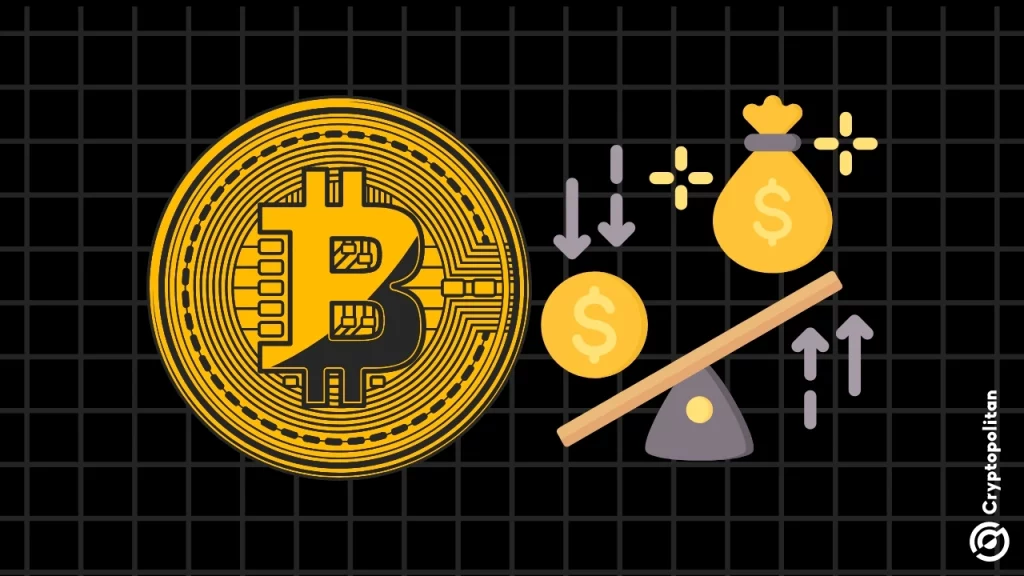In the world of cryptocurrencies, spot trading once dominated the landscape. But as Bitcoin (BTC) and Ethereum (ETH) matured into large-scale financial assets, the role of derivatives markets became central to price discovery, volatility, and overall liquidity. Today, futures, options, and leverage-driven products often dictate the short-term movements of BTC and ETH, while influencing longer-term investor behavior.
Understanding how derivatives affect price action requires analyzing three key areas: futures expiration cycles, the dominance of options markets, and the role of leverage in amplifying volatility. These mechanics, though rooted in traditional finance, take on unique dynamics in crypto due to 24/7 trading, high retail participation, and evolving regulatory frameworks.
1. Futures Expiration Effects: How Monthly Cycles Impact BTC and ETH
Crypto futures have become a cornerstone of institutional and retail participation alike. Contracts allow investors to speculate on BTC and ETH prices without holding the underlying assets. However, expiration cycles often create volatility and unusual price behavior.
Why Do Expirations Matter?
- Convergence Pressure: As a futures contract approaches expiration, its price tends to converge with the spot price. This can cause abrupt moves in either market.
- Open Interest Unwinding: Traders often close or roll positions into new contracts, sparking higher-than-average volume and sudden price swings.
- Psychological Milestones: Expiration dates, often the last Friday of the month, become focal points for speculation and strategy execution.
Examples of Expiration Impact
- Bitcoin “End-of-Month Effect”: Analysts have frequently observed BTC price dips or surges around monthly futures expiry on platforms like CME. For example, large expirations in 2021 often aligned with sharp retracements, leading to theories of institutional “pinning” (manipulating prices around strike levels).
- Ethereum Post-Merge Futures: With ETH shifting to Proof-of-Stake in 2022, futures markets became critical for hedging staking exposure. Expiration weeks have shown heightened volatility as stakers and traders reposition.
Investor Takeaway
Futures expiration dates act like “mini-events” in crypto markets. Savvy traders monitor open interest levels and strike prices to anticipate potential price pinning, short squeezes, or liquidation cascades.
2. Options Market Dominance: Gauging Market Sentiment Through Derivatives
Options markets have exploded in popularity for BTC and ETH, especially since 2020, when institutional investors entered more aggressively.
Why Options Matter
Options allow traders to bet on volatility, hedge positions, or speculate on directional moves with limited risk. Their structure creates implied volatility (IV) metrics that often act as leading indicators of market sentiment.
Key Dynamics
- Put/Call Ratios: A high ratio signals bearish sentiment, while a low ratio suggests bullish sentiment.
- Max Pain Theory: The price at which the greatest number of options expire worthless often acts as a gravitational pull during expiration weeks.
- Volatility Smiles/Skews: In BTC and ETH, out-of-the-money puts often trade at higher premiums due to crash fears, unlike traditional equities where skew is more balanced.
Case Studies
- BTC Options in May 2021 Crash: A flood of put buying ahead of the May 2021 meltdown coincided with fears of Chinese mining bans, reflecting hedging pressure.
- ETH Options During DeFi Boom: During 2020–2021, ETH options volume surged, as DeFi participants used them to hedge against protocol risk and yield farming exposures.
The Growing Options Ecosystem
- Platforms like Deribit dominate BTC/ETH options trading, offering contracts with billions in daily volume.
- Increasing institutional flows have made options markets a primary driver of volatility, rather than merely a byproduct.
Investor Takeaway: Monitoring options open interest, skew, and IV levels provides critical insights into future volatility expectations and potential inflection points in BTC/ETH markets.
3. Leverage-Driven Volatility: Amplifying the Swings
Leverage is both the lifeblood and the Achilles heel of crypto trading. Unlike equities or commodities, where margin rules are tightly regulated, crypto exchanges often allow extreme leverage—sometimes up to 100x.
How Leverage Moves Markets
- Liquidation Cascades: When prices move sharply, leveraged positions can be forcefully liquidated, creating feedback loops that exacerbate volatility.
- Funding Rates in Perpetual Futures: Perpetual contracts, which never expire, use funding rates to balance long and short interest. When funding is highly positive, it signals excessive long leverage; negative funding implies short dominance.
- Short and Long Squeezes: Periods of high leverage often end with violent squeezes that punish over-leveraged traders.
Historical Examples
- March 2020 Crash: Excessive leverage on BTC futures accelerated the downward spiral, with billions in liquidations within 48 hours.
- Elon Musk Tweets (2021): Sudden bullish or bearish sentiment swings amplified by leverage often led to 10–20% daily moves.
- FTX Collapse (2022): Excessive leverage and rehypothecation of funds created systemic risk, showcasing how derivatives mismanagement can devastate markets.
Leverage as a Double-Edged Sword
- On one hand, leverage boosts liquidity and participation, allowing more efficient price discovery.
- On the other, it makes BTC and ETH uniquely prone to extreme volatility, deterring risk-averse institutions.
Investor Takeaway: Monitoring leverage ratios, funding rates, and liquidation heatmaps is critical for anticipating sudden market swings in BTC/ETH.
4. How Derivatives Interact With Spot Markets
Derivatives are not isolated—they shape and are shaped by spot markets.
- Price Discovery: Increasingly, BTC and ETH price discovery occurs on derivatives exchanges rather than spot markets. Futures and options volumes often surpass spot volumes.
- Liquidity Pools: Institutions prefer futures and options for hedging, which makes these markets deep and influential.
- Feedback Loops: Derivative-driven moves (liquidations, max pain effects) directly influence spot trading behavior, pulling prices toward or away from certain levels.

5. Institutional and Regulatory Perspectives
Institutions view derivatives as essential for risk management and speculative exposure.
- CME Bitcoin Futures: Their launch in 2017 marked a turning point, legitimizing BTC as an asset class.
- Ethereum Futures Approval (2021): Boosted ETH’s institutional adoption, though volumes remain smaller than BTC’s.
- Options Growth: Institutions increasingly use options to hedge exposure to corporate BTC holdings or ETH-based DeFi investments.
Regulators, however, remain wary:
- Systemic Risk Concerns: High leverage and unregulated offshore exchanges pose systemic threats.
- SEC and CFTC Oversight: U.S. regulators are increasingly scrutinizing derivative products, pushing for greater compliance.
6. Lessons for Investors and Traders
- Expect Expiration Volatility: Futures and options expirations often bring outsized moves.
- Read Options Data: Skews, put/call ratios, and IV provide forward-looking clues about sentiment.
- Beware of Leverage: Excessive leverage can amplify both gains and catastrophic losses.
- Watch Institutional Flows: CME futures and options often foreshadow broader market moves.
- Long-Term vs. Short-Term: While derivatives drive short-term volatility, BTC and ETH’s long-term value remains rooted in adoption, scarcity, and utility.
7. The Future of Derivatives in BTC/ETH Markets
Looking forward, derivatives will only grow in importance:
- Volatility Products: Expect more structured products like volatility indices and ETFs tied to BTC/ETH options.
- Cross-Asset Integration: Derivatives tied to commodities or equities may integrate with BTC/ETH for portfolio hedging.
- Reduced Leverage Limits: Regulatory crackdowns may reduce extreme leverage, dampening volatility over time.
- On-Chain Derivatives: With DeFi growth, ETH-based decentralized options and futures protocols will expand, creating transparent alternatives to centralized exchanges.
Conclusion
Derivatives are no longer peripheral—they are central to Bitcoin and Ethereum’s price action. Futures expirations create recurring volatility, options markets increasingly set sentiment, and leverage amplifies swings. These dynamics intertwine spot and derivatives markets, shaping the crypto landscape in ways both predictable and chaotic.
For investors, the lesson is clear: understanding BTC and ETH today requires not just studying charts and fundamentals, but also monitoring the derivatives ecosystem that underpins modern price discovery.
As the industry matures, derivatives will likely bring both greater sophistication and ongoing bouts of volatility. The balance between hedging and speculation, institutional adoption and retail gambling, will define the next era of BTC and ETH price dynamics.

























